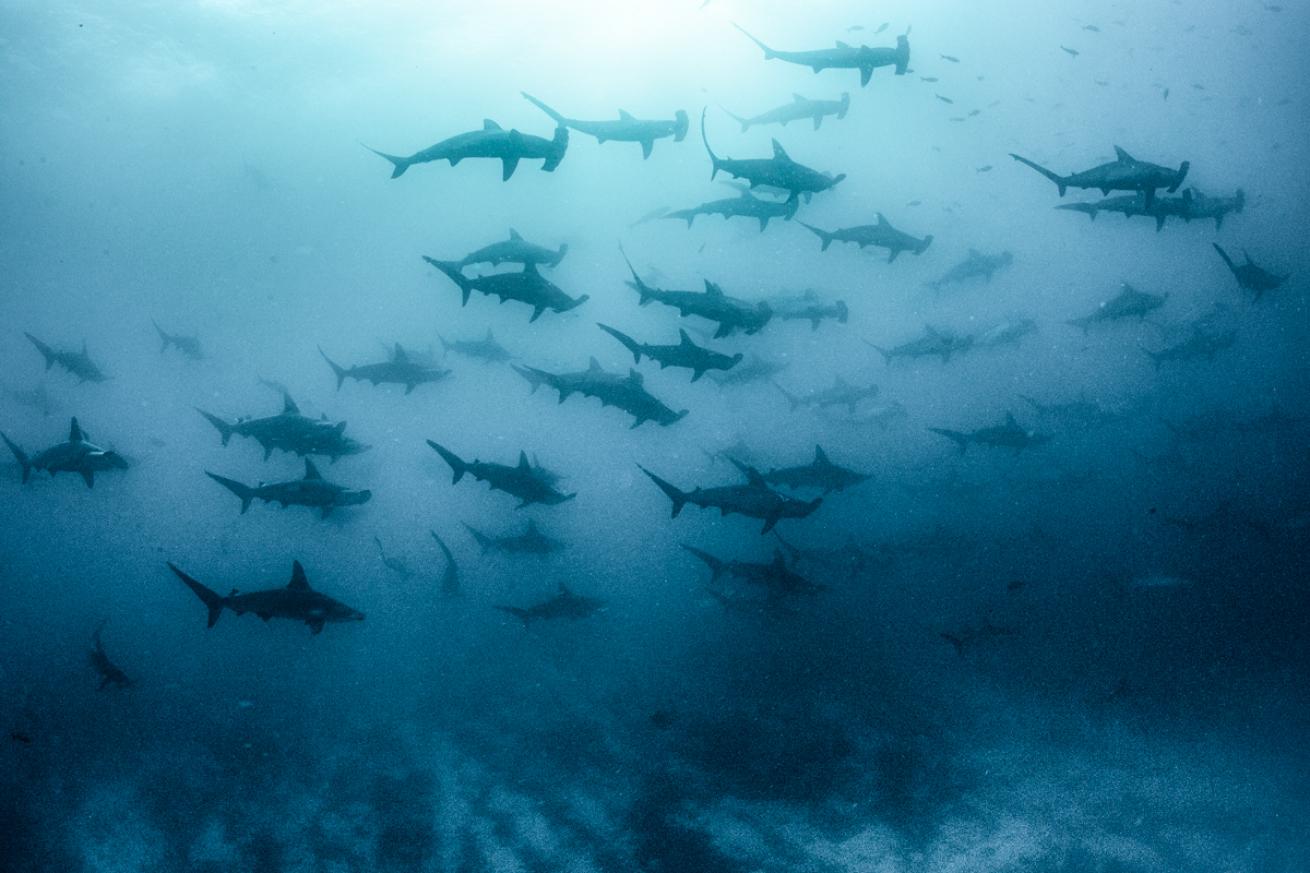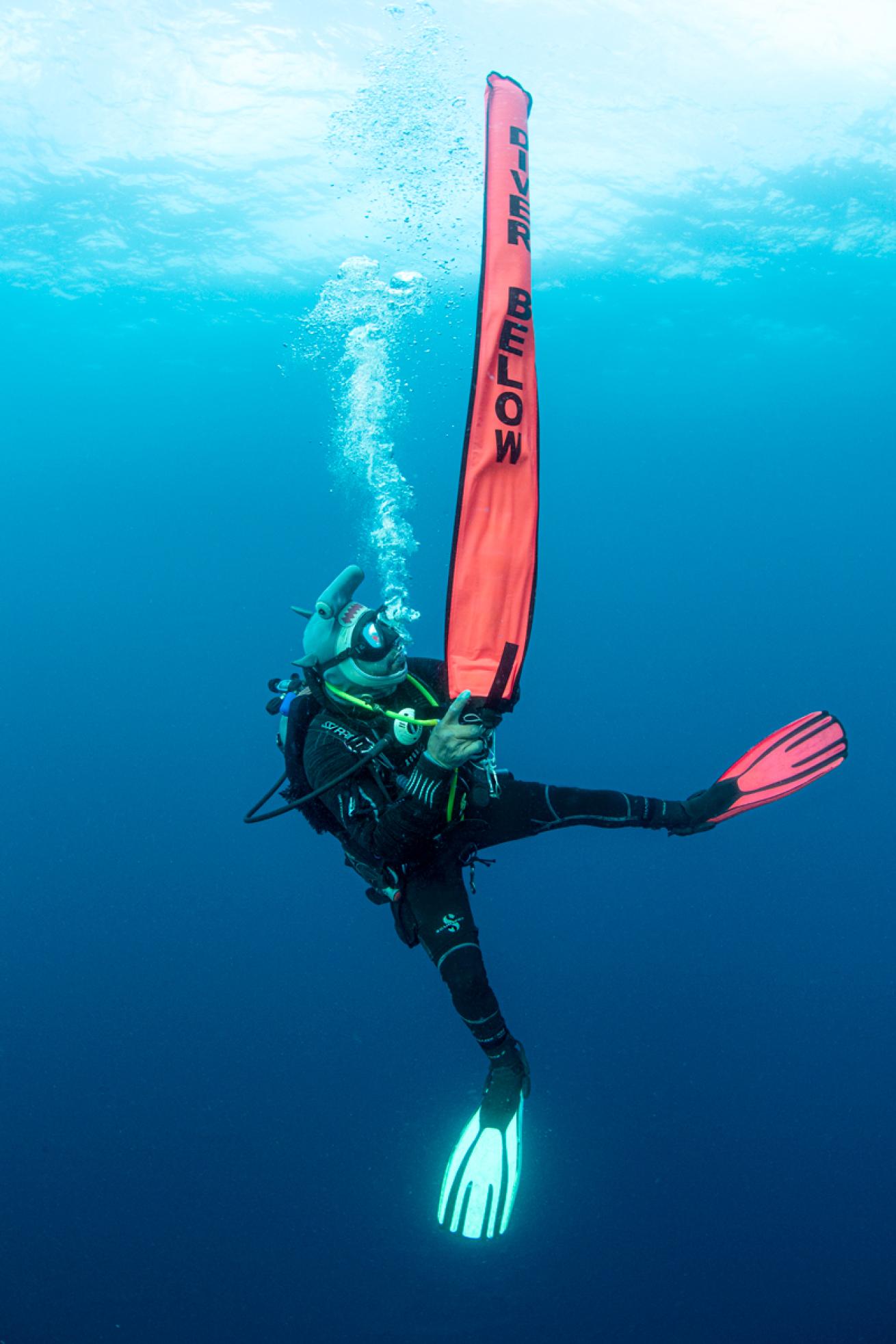Skills You Need for Boat Diving
I’m writing this column from the dining area of the Galapagos Sky liveaboard, reveling in some of the best dives of my life. After filming endemic species of marine iguanas feeding on algae in the shallow waters of Fernandina Island, I cruised to the famous Wolf and Darwin islands to find hammerhead and Galapagos shark cleaning stations. Like many incredible dive destinations, these are only accessible by boat. Whether you are jumping on a local day charter or a liveaboard, these tips will have you boat diving like a pro.
Know Before You Go
Before your boat trip, read the suggested pack list, ensure you have all the necessary equipment and label everything. On a boat, other divers may have the same BCD as you, and your weight pockets may get confused. Make sure you pack proper exposure protection and carry extra thermal layers with you for varying water and air temperatures, as well as a warm hat and sun hat for between dives. Weather conditions on a boat can vary throughout the day, and so can your body temperature after multiple dives.

Annie CrawleyYou never know what surprise awaits you at Darwin’s Arch in the Galapagos. This school of hammerheads cruised by on our safety stop.
If you don’t have your own kit, many operators will offer rental gear. If you go this route, reserve sizes in advance and familiarize yourself with the gear provided. Check your computer, sensors, lights and batteries. Carrying a spare-parts kit and extra equipment in case of gear malfunction can save a dive.
Bring gear that the boat may not have readily available, such as an extra alternate air source, computer and mask. While all boats should have a first-aid kit on board, a small personal first-aid kit can take care of discomfort or concerns that might arise. It should include decongestant, ear drops, seasickness medicine, triple-antibiotic ointment and personal medications.
What To Expect on Board
Every boat gives two briefings: a safety briefing when you board and a dive briefing when you anchor.
Pro Tip
When back-rolling off a boat for drift dives, hold your mask in place and check your strap as soon as you enter the water. In many current-driven locations, divers are required to do negative entries into the water and carry DSMBs to mark their location during their safety stop. To do a negative entry, empty your BCD completely before rolling into the water. Meet your buddy and other divers down at depth. Negative entries are required in many advanced diving locations.
The safety briefing will cover the location of life jackets and rafts, emergency procedures, emergency-oxygen location and battery charging stations.
The dive briefing will cover specific dive site information and navigation tips, ocean conditions, maximum depth and time, entry and exit points, and safety-stop procedures. Many locations with a stronger current require you to have a delayed surface marker buoy (DSMB). Depending on the boat, you may be required to stay with your guide, or be free to explore with your buddy. If you are on the boat by yourself, you will be paired with another diver or a buddy team.
Descending on a Line
When boat diving with a descent line, it can be helpful to hold the line for stability. However, when a large swell is present, holding onto the line will jerk you up and down. In case of a swell, use the line only as a visual reference and use your computer for depth. On the bottom, ensure you can navigate to and from the line so you can safely return to the boat and make your safety stop on the line. If you are a beginner, practicing easy navigation patterns out and back from the line will build confidence.
DSMB Tips
Your DSMB is an essential piece of gear on any boat dive. Choose your DSMB according to destination. For safety stops in blue water, a large DSMB is preferable to allow the chase boat to follow you.
It is important to understand when and how to use it. There are many different DSMBs on the market. Some can be inflated orally, while others are connected with a quick-release mechanism to your BCD (these connectors will not work with an alternate inflator second stage like the Air2). I prefer a large DSMB—at least 6 feet tall—with an open bottom that can be inflated at the surface or at depth using an alternate air source or your regulator. You should carry a reel to attach to your DSMB to deploy at depth, as well as a double-ender clip to attach the two pieces together.

Annie CrawleyAnnie Crawley deploying her DSMB.
To deploy at depth, unravel the tube and empty your BCD to become slightly negative. Make sure there are no hazards at the surface or risks of entanglement—such as kelp—before adding any air. Inflate the open end of the tube with your alternate air source or the exhaust from your regulator while gently applying tension to the line. Hold the reel using your index finger and thumb to allow it to unspool freely. The DSMB will begin to rise, and the air inside will expand. When it hits the surface, put tension on the line so the tube floats upright. The floating buoy will alert the boat to your position underwater, allowing them to locate you as you drift during your safety stop.
When not in use, the DSMB can be tucked away in a BCD pocket or clipped off to a D-ring. In addition to your DSMB, you should always dive with an auditory alert, such as a whistle or DiveAlert air horn. Consider taking the PADI Delayed Surface Marker Buoy
Diver course to work with a dive instructor and perfect your deployment skills. It’s important to check dive prerequisites before booking a spot on the boat. Some dive destinations require a minimum number of dives or an advanced diver certification. It’s important that the level of your dive experience matches the conditions of the destination. Boat diving is addicting, and it will open up a new side of diving. You can travel to less explored areas of our world, often with less physical exertion. Like any sport, there is a learning curve associated with boat diving, coupled with a whole lot of fun.










